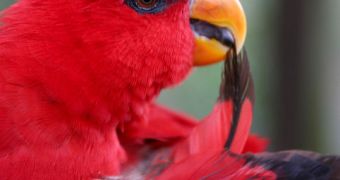A first-of-its-kind governmental survey in the US shows that over the last 40 years bird populations have declined dramatically, on account of a variety of causes, including global warming, increasing urban sprawl, and the appearance of new predator species in closed ecosystems. But regardless of the cause, in each and every single one of these cases energy production has had some part to play. Not taking into account what type of energy has been produced, the recorded damage to the bird populations has been severe.
Even alternative energy sources pose an increasing threat to the winged creatures. They often collide with wind turbines and are severely affected by the waste lakes that are created around methane deposits. But oil pumps disturb them even more. The study reveals that almost all species of birds avoid nesting in areas around these structures and that collisions with them account for a high number of dead creatures.
In addition, the “chemical” lakes near methane deposits also offer the ideal conditions for large numbers of mosquitoes to form. The insects carry potent diseases, such as the West Nile virus, and the infections kill thousands over thousands of birds each year in the US alone. Another human activity that has been directly linked to bringing about the end of the creatures is mining, and especially the mountaintop-removal kind. When all the forests that usually cover these peaks are brought to the ground, so are the perfect places for the birds' nests.
The conclusion of the report is very bleak and straightforward: “Energy development has significant negative effects on birds in North America.” It does not, however, indicate if one form of energy production is more detrimental to the animals than the other. “We need to go into these energies with our environmental eyes open. We need to attend to any form of energy development, not just oil and gas,” Cornell Lab of Ornithology director John Fitzpatrick says. His organization has worked with another non-profit group on the new study.
The paper also brings some hope, saying that protective measures can help save the birds and even prompt a recovery in their numbers. It gives as an example the large wetland areas of the US, where increased federal protection of the regions has made it easier for endangered bird species to rebound.

 14 DAY TRIAL //
14 DAY TRIAL //